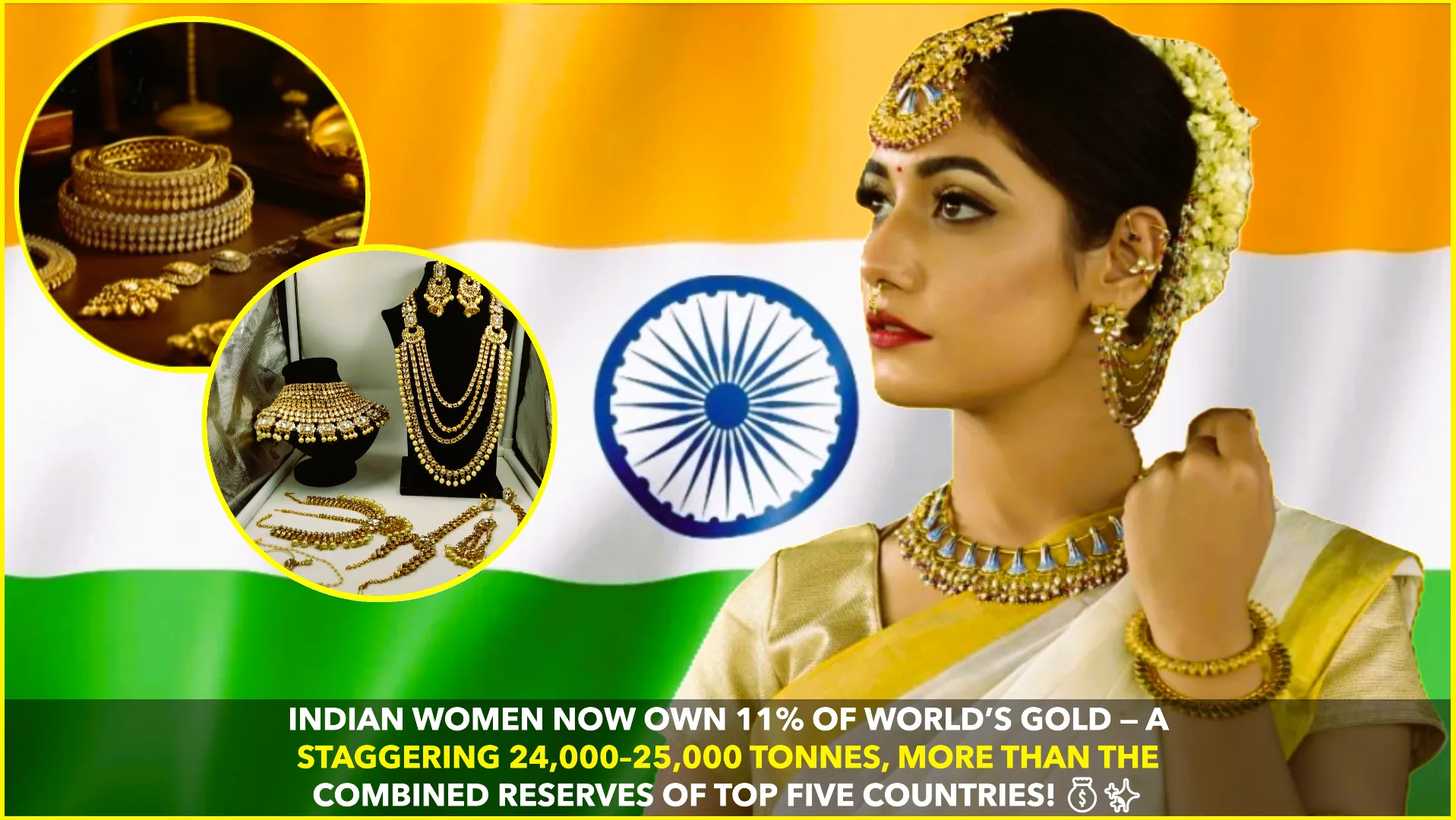When it comes to wealth measured in gold, Indian women stand unmatched. According to recent estimates, women in India collectively own about 24,000–25,000 tonnes of gold, which amounts to roughly 11% of all the gold ever mined in the world. To put that in perspective, this figure is larger than the combined official gold reserves of the top five countries — the United States, Germany, Italy, France, and Russia.
A Glittering Legacy
Gold has always held a special place in Indian culture. Beyond being just a financial asset, it is deeply tied to tradition, festivals, and weddings. Families often view gold as a secure and portable form of wealth, handed down across generations.
The practice of gifting gold during marriages is particularly significant. Bridal jewellery collections can often weigh several kilograms, and with nearly 10 million weddings taking place in India every year, the cultural demand never slows down.
Experts note that this cultural attachment explains why Indian households — and especially women — have continued to accumulate gold, despite modern investment options such as mutual funds, equities, and digital gold.
More Than Just Ornamentation
While gold jewellery is a symbol of beauty and status, Indian women see it as a trusted financial cushion. In rural areas, gold often substitutes for formal banking. When cash is tight, families pledge jewellery to local lenders or banks to secure short-term credit.
Economists point out that this dual role of gold — ornament and investment — makes it a unique asset in India. Women, who traditionally manage household finances, keep gold not just as adornment but also as insurance against emergencies.
Numbers That Dazzle
To understand the scale of these holdings, consider this:
- The United States, the world’s largest official gold holder, has about 8,133 tonnes.
- Germany follows with 3,355 tonnes, while Italy and France each hold over 2,400 tonnes.
- Russia has around 2,300 tonnes in its reserves.
Together, these five nations hold less than 19,000 tonnes. Indian women alone, by comparison, hold around 24,000–25,000 tonnes privately — a stunning contrast that underscores the nation’s cultural obsession with the yellow metal.
Impact on Economy
India is one of the largest importers of gold in the world. The World Gold Council (WGC) has often flagged this massive demand as a factor influencing the country’s current account deficit. Despite government efforts to promote alternatives like sovereign gold bonds or encourage digital transactions, the allure of physical gold remains unbeatable.
The widespread private ownership of gold by Indian women also has macroeconomic implications. Analysts believe it provides a hidden layer of financial security to households, particularly in times of economic distress, currency devaluation, or inflation.
A Modern Shift
Interestingly, while traditional jewellery remains dominant, younger Indian women are increasingly exploring lighter designs and digital gold investments. Financial planners suggest that urban women are blending tradition with practicality — purchasing gold not only for adornment but also in formats that align with modern lifestyles.
Still, whether in digital form or in the family locker, gold continues to hold an emotional and financial grip like no other asset.
Expert Insights
Commenting on the phenomenon, Somasundaram PR, CEO of the World Gold Council India, recently said in an interview:
“Gold in India is not just an investment — it’s a cultural mainstay. Its role as a store of value ensures its relevance across generations, making Indian households among the largest private holders globally.”
Conclusion
The fact that Indian women own more gold than the official reserves of the five wealthiest countries combined is more than just a statistic — it’s a reflection of history, tradition, and trust. From weddings to festivals, and from savings to security, gold continues to define wealth in India, with women at the center of this dazzling story.
Source: World Gold Council, Financial Express, Economic Times.










